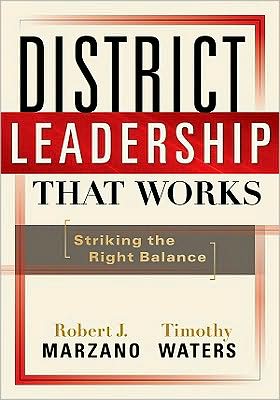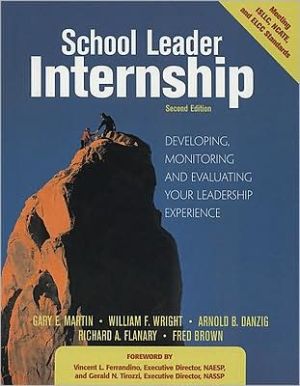Management of Child Development Centers
Search in google:
Management of Child Development Centers, 7th Edition, addresses the importance of high-quality programs for young children and the support they provide to families. Managers of programs for young children must understand the value of family, as well as the relationships between family, program and community.Part 1 of the text provides an overview of the demographic and theoretical context within which child development programs operate. Part 2 focuses on the 13 core competencies: personal and professional self awareness; organizational, fiscal, and personnel management; human relations; facilities management; health and safety; food service; educational programming; family support; marketing and public relations; assessment and evaluation; leadership and advocacy.Features:Decisions, Decisions... features ask the students to reflect on topics discussed in the chapters and apply the information to real-life situations. Questions for Review at the end of each chapter help students identify and recall basic information. Professional Portfolio assignments help students create products that can be included in a portfolio to demonstrate their mastery of the core competencies. At least one portfolio assignment in each chapter incorporates the use of technology (e.g., Internet-based research; desktop publishing software), supporting the integration of these skills within the core competencies. Resources for Further Study provide students and instructors with a convenient list of up-to-date resources, in print as well as online, for a deeper investigation of the topics discussed in each chapter.New to this Edition: New self-assessments in Chapter 4 (Personal and Professional Self-Awareness) and Chapter 5 (Organizational Management Skills). Updated forms and tools for assessment and evaluation, budgets, personnel, and general center management. Expanded coverage of assessment and evaluation in Chapter 14, including lists of instruments for assessing children and evaluating programs. New material on emotional labor (Chapter 4); strengthening families to prevent child abuse (Chapter 13); emotional intelligence and leadership styles (Chapter 16). A Technology Toolkit added to each chapter in Section II provides specific suggestions for using computers, digital photography, and internet resources to help students achieve NAEYC Competency 10 (Technology) as they address other Core Competencies.New tables, charts, and graphic illustrations to clarify key concepts. Engaging vignettes have been added to the beginning of each chapter to bring key concepts to life.
PART I INTRODUCTIONCHAPTER 1 Managing Children's Centers in the 21st CenturyDefining TermsStages of Professional DevelopmentChild Development Centers: A Support System for FamiliesPopulation Trends: Getting the Big Picture in FocusDemand for Child CareChild Care and PovertyNo Child Left BehindCore Competencies for DirectorsConclusionCHAPTER 2 Types of Child Development ProgramsFive Types of Child Development ProgramsThree Ways of Financing Child Development ProgramsGovernment Support for Child CareCollaboration: A Systems ApproachConclusionCHAPTER 3 Applying Theories in Managing a Child Development CenterTheories from Multiple Areas of KnowledgeDevelopmental TheoryTypes of Theories of Human DevelopmentPostmodern Critiques of Child Development TheoryManagement TheoryApplying Management TheoriesTotal Quality ManagementEcological System FrameworkEquilibrium and Energy in the EcosystemApplying the Ecosystems ModelManagement ProcessesConclusionPART II CORE COMPETENCIESCHAPTER 4 Reflective Management: Personal and Professional Self-Awareness Reflective PracticeKnowing YourselfWhat Will Be Your Management Style?Psychological TypeLeadership StylesEmotional IntelligenceStages of Personal and Professional DevelopmentDecision MakingTime ManagementConclusionCHAPTER 5 Organizational ManagementWorking with the SystemsRights of Children and FamiliesBusiness ConcernsThe Manager's Job: A Juggling ActThe Planning ProcessThe Policy BoardThe Advisory BoardThe Value of PlanningSteps in the Planning ProcessPlanning a Response to ChangePolicies, Procedures, and RulesConclusionCHAPTER 6 Fiscal ManagementTypes of ResourcesFunding SourcesSetting FeesHow Funds Are SpentFund-RaisingGrant ProposalsBudget PlanningConstructing a BudgetStarting a New BusinessRecord KeepingCash-Flow AnalysisInternal ControlsConclusionCHAPTER 7 Personnel ManagementOrganizingJob DesignJob CoordinationOrganizing Classrooms or GroupsOrganizational StructureStaffingRecruiting and HiringConclusionCHAPTER 8 Human RelationsThe Importance of Human RelationsThe Manager's RoleEmployee MotivationStaff MeetingsGroup DynamicsThe Staff's Professional DevelopmentSupporting Professional Development at All StagesThe Manager's Relationships with Individual Staff MembersVolunteersConclusionCHAPTER 9 Facilities ManagementManaging Indoor and Outdoor Learning Spaces: An Ecosystems PerspectiveRegulations and Professional StandardsChildren's Basic Environmental NeedsOrganizing SpaceThe Outdoor Learning EnvironmentMaintaining the FacilitySpace for StaffFurnishing SpaceRoom ArrangementConclusionCHAPTER 10 Managing Health and Safety IssuesPlanning for a Healthy EnvironmentLicensing Regulations and Professional StandardsRisk ManagementEmployees' HealthMeeting Ongoing Health NeedsMeeting Children's Physiological NeedsParental Responsibility for Children's HealthWhen Children Become IllChildren with Disabilities and Chronic Medical ProblemsHealth Education for Children and Their FamiliesMeeting Children's Mental Health NeedsMonitoring Health and Safety ConditionsConclusionCHAPTER 11 Managing Food ServicePlanning Meal ServiceMeeting Regulations and Professional StandardsFederal Subsidies for Food ProgramsOrganizing Food Service FacilitiesFood Service PersonnelPreventing Foodborne IllnessConsiderations When Feeding BabiesMenu PlanningSeating and Serving ChildrenFood and CurriculumCollaborating with Families About Food MattersMonitoring and Controlling Food ProgramsConclusionCHAPTER 12 Educational ProgrammingPreliminary OrganizationRegulations and Professional StandardsSelecting a Curriculum Model or ApproachDevelopmental PrinciplesBasic Guides to Program DevelopmentManager's Responsibility for the Educational ProgramSchedulingFamilies' Role in the Educational ProgramPlanning Experiences for ChildrenConclusionCHAPTER 13 Family SupportRelationships with FamiliesRegulations and Professional StandardsUnderstanding Family SystemsCultural ResponsivenessFamily-Friendly PracticeBuilding Partnerships with FamiliesWhen Conflicts AriseFamilies as Human Resources for the CenterCommunity Resources to Support FamiliesConclusionCHAPTER 14 Marketing and Public RelationsMarketing: Attracting and Retaining CustomersIncreasing Customer SatisfactionPublic Relations: Impacting Perceptions and OpinionsThe World Beyond Child Care"Double Duty" in Public RelationsCountering Negative PublicityConclusionCHAPTER 15 Assessment and EvaluationTypes of AssessmentQuality and AccountabilityStandardsAccreditationTHe Manager's RoleSteps in the Managing and Controlling ProcessWho Evaluates?Monitoring Other UnitsEvaluation of ManagementWhen Evaluations Yield Negative ResultsConclusionCHAPTER 16 Leadership and AdvocacyWhat Is a Leader?Emotional Intelligence and LeadershipManaging and Leading DifferTypes of LeadershipHoning Your Skills as an AdvocateLeadership and AccreditationOther PossibilitiesConclusionAppendix A NAEYC Code of Ethical Conduct and Statement of Commitment Appendix B Supplement for Administrators








